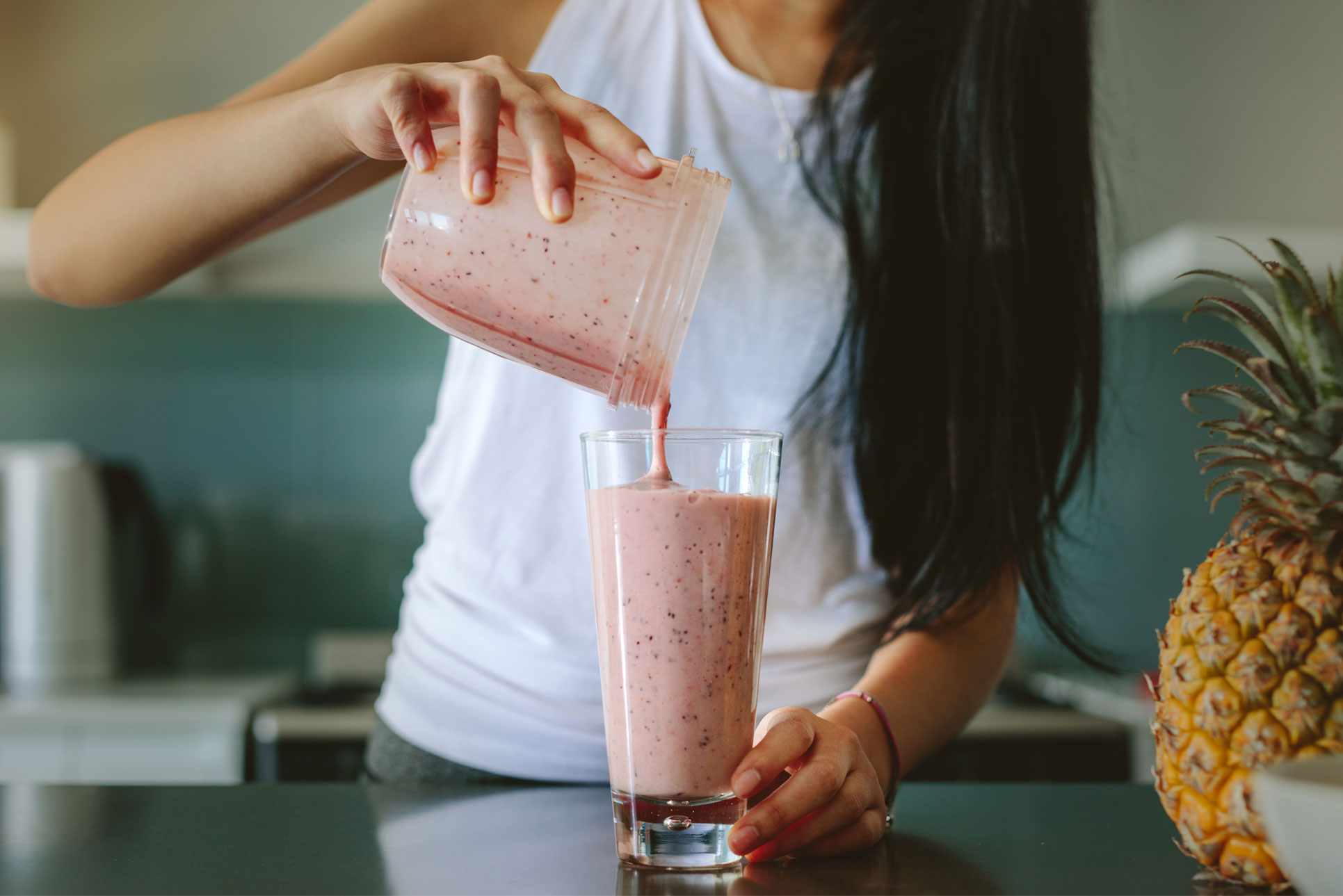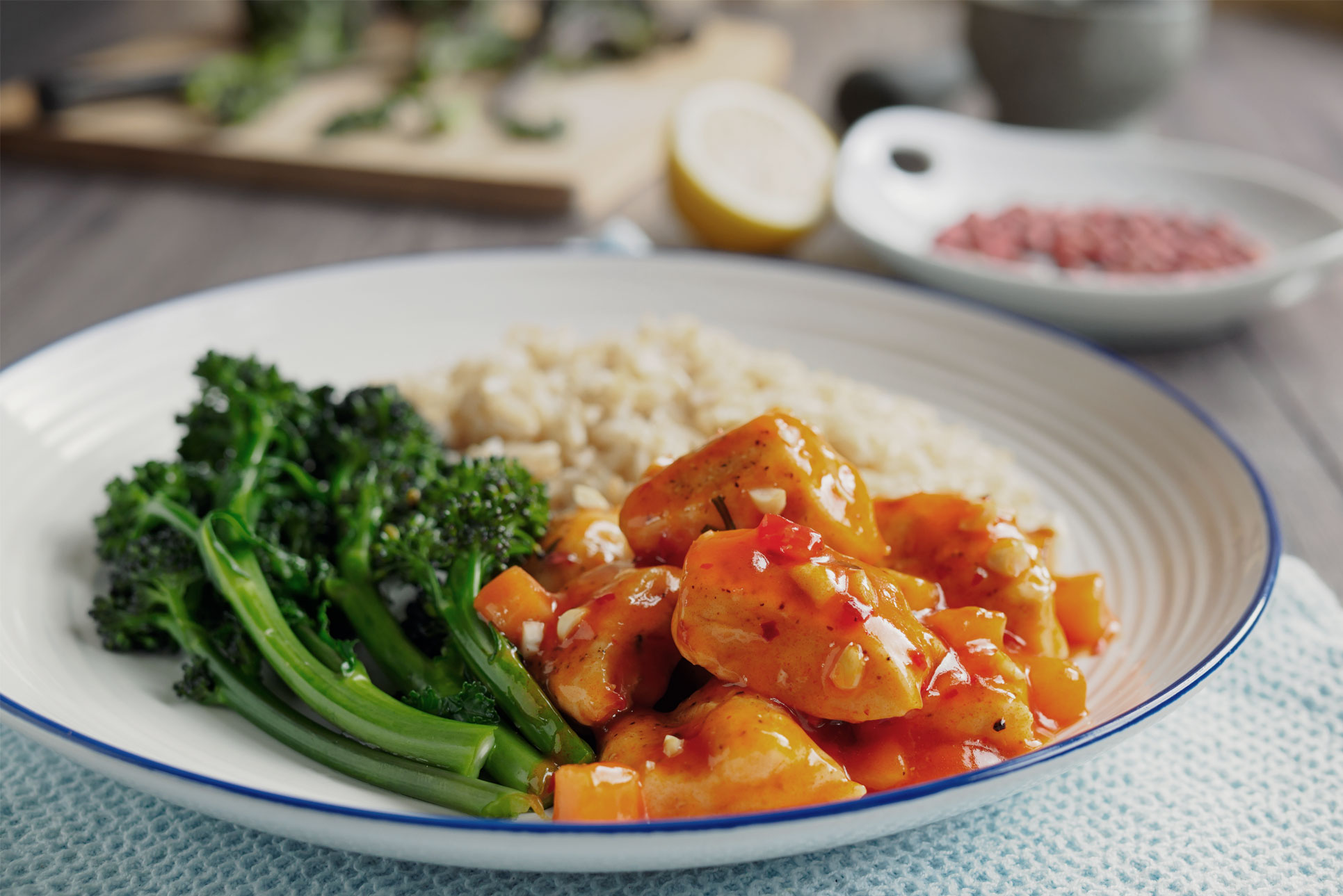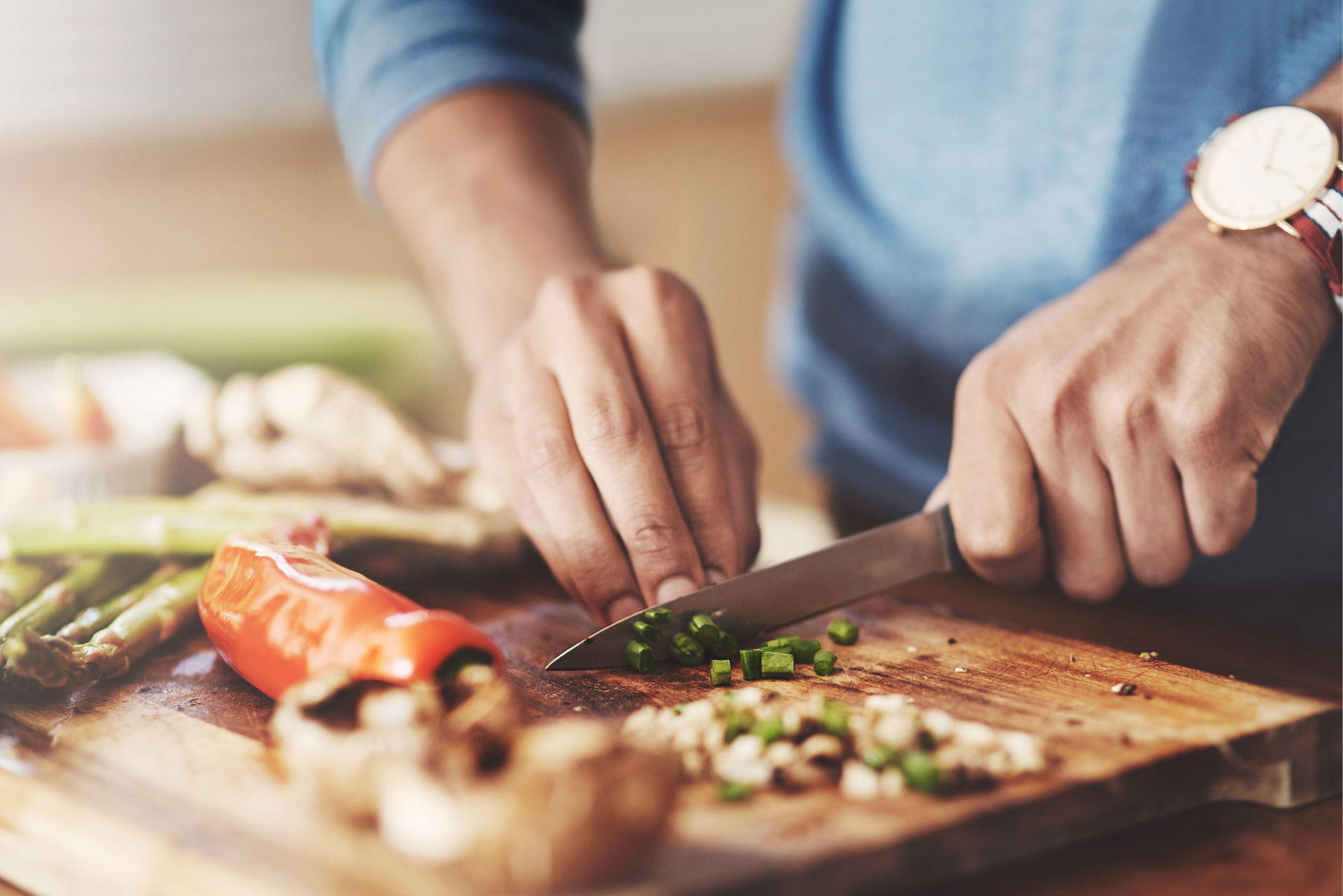Article - 31st July 19
Our expert:
James Hudson, Performance Nutritionist at Nutrition in Sport. James played Premiership Rugby for Gloucester, as well as lining up for London Irish, Newcastle Falcons and England Saxons. He has a degree and masters in biochemistry from the University of Bath and has completed the International Olympic Committee’s Diploma in Sports Nutrition. He is currently working towards a PhD at Liverpool John Moores University.
What’s in this article…
- What classes as a low calorie meal?
- Meal ideas under 500 calories
- Filling low calorie meals
- Tips on cutting calories in food
- Things to watch when reducing calories
Losing weight, training for a race or simply looking for inspiration to keep things tasty in the kitchen? There are loads of reasons for whipping up low calorie meals.
We’re all about sustainable, healthy living that’s delicious, fresh and exciting. That’s why we’ve created this low-calorie eating guide, along with top tips from sports nutritionist James Hudson, which helps you set nutritional goals alongside a healthy serving of recipe inspiration too.
At a glance
- Everyone has a different calorie intake
- Slow-release energy is the secret to filling, low calorie meals
- Drastic cut backs can cause more harm than good

What classes as a low calorie meal?
When looking for healthy meal options, under 500 calories seem to have become the standard, with many restaurants offering up sub-500 calorie menus as a health-conscious option.
In reality, everyone’s calorie intake is different – and it can change quite dramatically depending on how much exercise you’re doing and what your fitness goals are. To create a realistic plan for reducing your calories, you need something more specific to work from.
How to calculate your calorie intake
The official guidelines for daily calorie intake are 2,500kcal for men and 2,000kcal a day for women, according to the NHS¹. But there are a whole range of factors that will impact your actual requirements including age, height, build and ethnicity – which all affect your metabolism.²
James advises: “The best way to calculate your daily calorie intake is probably going to be using an equation like Harris Benedict to give you a rough idea of how much energy you need each day to maintain your body weight, and then by tracking your food intake for a few days.”
The Harris Benedict equation³ looks at your weight, height and age. There have been various versions but the most recent is:
(Weight in kg x 10) + (Height in cm x 6.25) – age in years x 5) then + 5 for men, or minus 1612 for women.
You’ll find loads of calorie-counting apps that make it easy to keep track of what you’re eating when you’re on the go. Keep a log of everything you eat for at least a few days to help get an understanding of your current calorie intake.
How to start lowering calories
James doesn’t think making drastic cuts is the correct approach, but instead suggests “reducing calories in steps.”
This helps to create a sustainable plan that you’ll stick to, rather than a drastic fad diet that won’t last.
“If you’re looking for a significant amount of weight loss and have been gaining weight, then it might be as much as a 500-calorie reduction each day,” he adds.
This calorie reduction - split across your meals and healthy snacks - could help you lose one to two pounds a week, according to the NHS guidelines.⁴
“If you’ve been losing weight consistently for a long time you might go for a more modest reduction of 250-300 calories a day,” says James.
Need to know: Cut your calories in stages to create a sustainable, healthy low calorie plan.
Meal ideas under 500 calories
Once you’ve got your calories on lock down, you’ll need some culinary inspiration to help you keep your plan on track. Feed your inner strength and smash your health goals with nutritious, delicious meals under 500 calories:
Breakfast
Start your day with a fruit smoothie, using skimmed milk or apple juice along with fat-free yoghurt to give it that silky, lump-free texture. For your morning dose of protein, add a dollop of peanut butter. To make sure you’ve got slow-release energy, blend in a handful of oats.
Want something cooked? Enjoy protein-rich poached eggs on wholemeal toast, topped with smashed avocado and a squeeze of fresh lime.

Lunch and dinner
The magic formula for filling, low-calorie meals is:
protein + greens + beans/ pulses/ unrefined carbs
Build your meals around this combination and you’ll enjoy a load of wholesome goodness without the urge to snack during the day. Here are some ideas to get you started:
- Herb-crusted salmon, spinach and lentils
- Chilli chicken, broccoli and brown rice

Filling low calorie meals
Cutting down on calories doesn’t have to leave you feeling hungry. The secret is finding foods that give you a slow-release of energy, rather than one short burst.
- Eat more protein. It’s more filling than carbs or fats, so pile up your plate with lean, healthy protein like poultry, fish and beans.
- Try unrefined carbs. White refined carbs leave you feeling hungry soon after you’ve eaten, whereas unrefined carbs like brown rice and wholemeal pasta give you slow-release energy to keep you satisfied until your next meal.
- Always hydrate. Quenching your thirst helps to keep your body happy, and can prevent misleading tummy rumbles when you’re thirsty, not hungry.
- Choose monounsaturated fats. Good fats are great for slow-release energy so incorporate avocados, nuts and seeds into your low-calorie diet.
Need to know: You need to eat foods with slow-release energy to create filling, low calorie meals.

Tips on cutting calories in food
Calories and flavour are two different things – great news when you’re trying to eat more healthily. There are lots of ways you can cut calories, while still enjoying delicious meals:
- Get busy in the kitchen. “Foods that are highly processed normally have a high proportion of added sugars and fat,” says James. Make as much food as you can at home for an instant calorie reduction.
- Don’t cook with oil. There are so many ways to cook food without oil, like baking, grilling and poaching. You an even fry an egg and onions without oil using non-stick pans and a drop of water.
- Serve smaller portions. If there’s food in front of us, we’re more likely to eat it, says the NHS⁵. Make smaller portions (served on smaller plates) and clear up any leftovers straight away.
- Less sauce. In the UK, we love smothering salads with dressing, and having sauces for dipping. Swap for low-fat options or leave them out altogether for an easy calorie-cutting trick.
Need to know: Cooking methods, portion sizes and dropping high-sugar sauces are quick ways to cut calories.
Things to watch when reducing calories
We’re all guilty of wanting a quick fix, but when it comes to reducing your calorie intake you need to make sure you’re looking after your body and giving it the nutrition it needs.
“The dangers of reducing your energy is that it's not sustainable,” explains James. “You lose weight at first but you get disillusioned so that’s a psychosocial issue and can cause problems with your mental function.
“There are also physical problems especially with women, particularly bone health.”
If you start displaying these symptoms, it could be a sign that your calorie intake is too low:
- Consistent weight. If your calorie intake is too low, your body can lower its metabolism to preserve energy levels. This can mean your weight doesn’t change.
- Tired and lethargic. Without nutritional fuel, you’ll find you don’t have the energy to exercise. The magic combination for healthy living is eating well and regular exercise.
- Feeling cold. Food provides energy for your body to maintain a constant core temperature, so when energy is in short supply, your temperature will drop.⁶
- Mood swings. When ‘hangry’ isn’t a pre-meal phase but a way of life, you know you’ve gone too far. Cutting calories can make you more irritable, which is no fun for you or the people around you.⁷
In summary
With the right preparation and some inspiration in the kitchen, you can create low calorie meals that are really satisfying. Healthy living is all about feeling great, and with these delicious tips you can make sure you enjoy making positive changes to your lifestyle.
[1] https://www.nhs.uk/live-well/eat-well/cut-down-on-your-calories/
[2] https://www.nhs.uk/live-well/healthy-weight/metabolism-and-weight-loss/
[3] http://www.bmi-calculator.net/bmr-calculator/harris-benedict-equation/
[4] https://www.nhs.uk/live-well/eat-well/cut-down-on-your-calories/
[5] https://www.nhs.uk/live-well/eat-well/cut-down-on-your-calories/
[6] https://www.ncbi.nlm.nih.gov/pmc/articles/PMC3117452/
[7] https://chriskresser.com/are-you-an-under-eater-8-signs-youre-not-eating-enough/
More from our experts
-
Read MoreDiscover why quinoa is a nutritional powerhouse. Learn how many calories are in quinoa, its nutritional values and how to add it to your diet.
-
Read More
Chinese food - 31st July 19
The best low calorie Chinese food
Feed your takeaway cravings while sticking to your health goals with expert tips from nutritionist James Hudson on healthy Chinese food. -
Read More
Calories - 31st July 19
How many calories should you eat for breakfast
Get breakfast right to help abolish mid-morning snacking. Discover how many calories for breakfast is best with our expert nutritionist.


Share This
Tips on creating low calorie meals that taste good